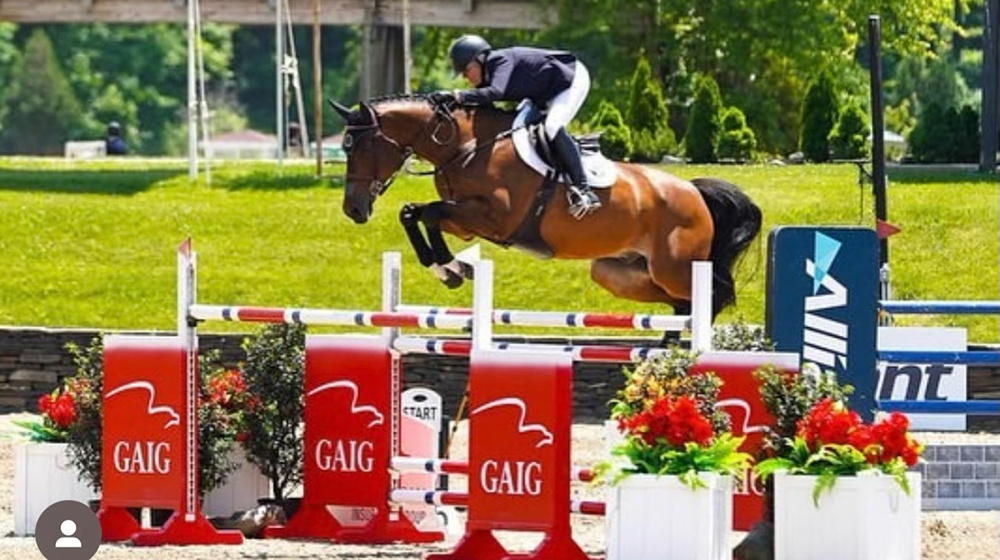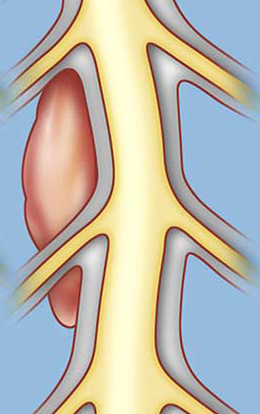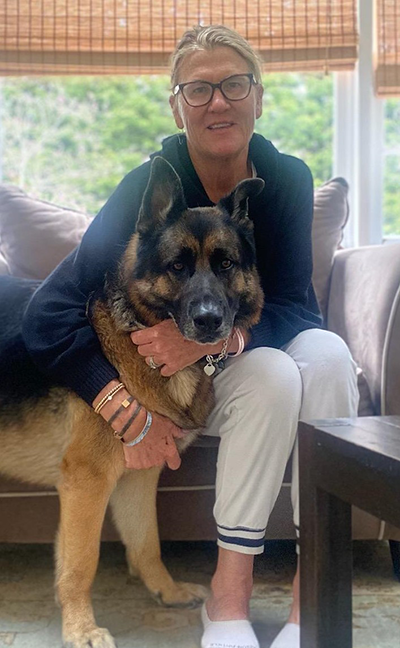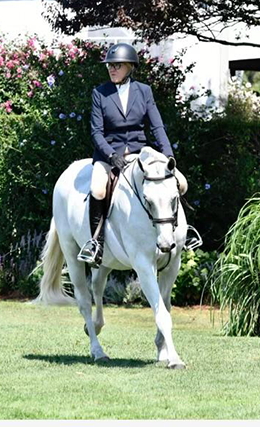
The natural drive of an athlete is to work hard, to persevere, to win. That’s the mindset of equestrian Laura Bowery, 54, of Southampton, New York. The mother of two is the owner of Sea-Aire Inc., a top Long Island stable for training both horses and riders. Laura started riding at age 3, became a teen sensation in the ring, and went on to compete internationally with the U.S. Equestrian Team, winning the 1999 Pan American trials. She was part of the Nations Cup-winning team in Sweden that same year. Competing at an individual level, she won the 2007 Grand Prix in Lexington, Kentucky, and was the 2008 Winter Equestrian Festival Circuit Champion. In short, Laura is a driven athlete and businesswoman.
That drive came in handy when a spine tumor threatened to halt her career. But thanks to the efforts of Dr. Roger Härtl, Dr. Lynn McGrath, and their team at Och Spine at NewYork-Presbyterian at Weill Cornell Medicine Center for Comprehensive Spine Care, Laura is back to her family, her business, and her career.
It all started with an accident in April. “I fell off a horse and broke my tailbone,” Laura says. “I had broken it a few years earlier, and the pain felt similar.”
Hear directly from Laura Bowery and Dr. McGrath in this video from Och Spine at NewYork-Presbyterian
Yet something was different this time around. Shortly after her injury, in addition to the pain Laura started experiencing some numbness, which got progressively worse. She eventually started to lose feeling in her groin, which affected her gait. To be safe, her doctor ordered an MRI, which uncovered a serious issue.
“My doctor called me in a panic telling me there was a mass and that it needed to be addressed,” says Laura. “One of my clients at Sea-Aire recommended the neurosurgeons at NewYork-Presbyterian and Weill Cornell Medicine. Before I knew it, I was seated with Dr. Härtl, who brought in his colleague, Dr. McGrath.”

Laura's tumor was extradural, which is the most common location for a spinal tumor. Extradural means it is outside the spinal cord and the dura in the bones and cartilage of the vertebrae.
“Some of the most common symptoms of a spine tumor are difficulty walking and numbness in the legs — all symptoms that Laura had,” says Dr. McGrath. “After reviewing Laura’s MRI, we saw that her tumor was a lumbar extradural mass, one of the most common types of spinal tumors. However, there was nothing common about her case: the location of her spinal tumor was in a precarious position, and it was clear that we needed to do something right away. Dr. Härtl and I agreed that it was imperative that we get to it immediately, either that night or the following morning, lest we risk permanent damage to her spine, and her riding ability.”
Laura’s whole life revolved around riding. She could not imagine anything putting an end to it.
“By the time I met with Dr. Härtl and Dr. McGrath, I couldn’t walk without a limp, and I couldn’t ride,” she says. “Riding is a big source of income for me; I ride, train, and compete. I’d been doing this for my whole life. This was something that I couldn’t just ride through. And I was worried I’d never be able to return to the life I lived. I stayed overnight, and they operated on me in the morning.”
“Our game plan for Laura’s surgery was to perform a minimally invasive tubular laminectomy and remove the tumor,” says Dr. McGrath. “In these cases we have to balance two conflicting goals - taking all the tumor out, and doing it in the safest and least invasive fashion. Since the tumor was sitting right on her nerve root, there was a risk that Laura wouldn’t walk again, let alone ride a horse. Our job was to completely remove the tumor to maximize the chances that she would regain her strength. At the same time it was important to do so in the least invasive way possible to avoid causing any complications that might impair her ability to continue to coach and ride at the highest level.

Laura Bowery
“We accomplished this by using a microscope and 3D intraoperative navigation to take the tumor out through a small tube,” Dr. McGrath continues. “We used intraoperative monitoring to ensure the health of the nerve throughout the case. These tools allowed us to execute our game plan, and achieve a total tumor resection, through the smallest incision and with the least destructive surgery possible."
The surgery went off without a hitch, and Laura was moved to the recovery room. “When I woke up, I could instantly feel a sense of relief from the removal of the mass,” she says. “The nurse, understandably, wouldn’t let me walk to the bathroom. My pride didn’t let me feel like I couldn’t walk. I was persistent and strong-willed about it. She relented. My mindset as an athlete left me single-handedly focused on recovering. The following night, I met with the rehabilitation team, and before I was discharged I was walking laps around the nurses’ station.”
After her release from the hospital, Laura immediately planned her re-entry into show jumping. “I had several things going for me: I was in good shape going into the surgery, I’m a fighter, and Dr. McGrath did an amazing job. All of that gave me a good foundation to support my goal of competing again.”
“Of course, we advised Laura to take it easy and take her recovery slow,” laughs Dr. McGrath. “When she left surgery, she was still walking with a limp and regaining feeling in her foot. It takes some time for everything to get back to normal, but the path to recovery is more manageable when you have a good mindset and the support of a good team.”

Laura Bowery is back to riding, pain free
“I worked with a trainer to get my walk back and get strength back into my leg,” says Laura. “My goal was to compete in the Hampton Classic, a show jumping competition in Bridgehampton two months after my surgery. By the time August came around, I wasn’t as fit as I wanted to be, but won the Grand Local Hunter Championship, winning 12 events. After that, I set my sights on an international competition, which I won as well.”
Today, Laura is back to focusing on Sea-Aire and her family. And she’s thankful to her doctors for how they swiftly dealt with her spine tumor.
“My surgery returned me to the life I had before my tumor,” she says. “If they hadn’t caught this, I might not be walking today. I wouldn’t be riding horses. It would be different for me and my two children. I would be a completely different person had I not had this procedure. I’m thankful. I felt extremely confident with Dr. McGrath and it was great working with him.”